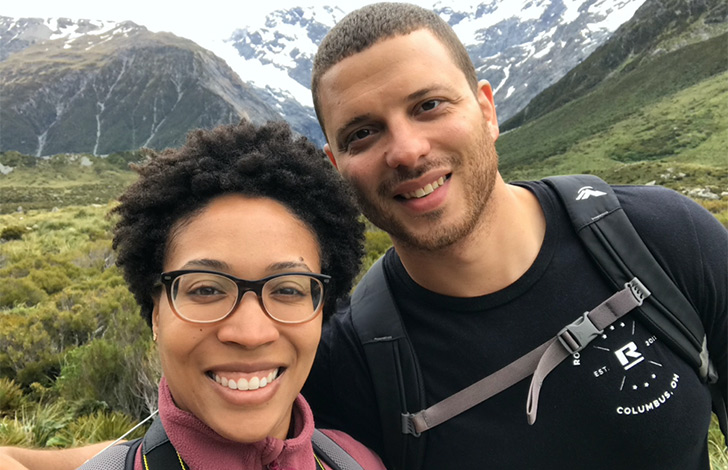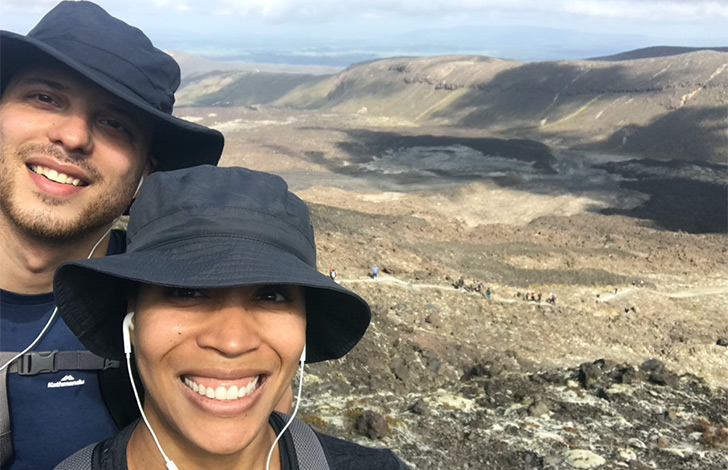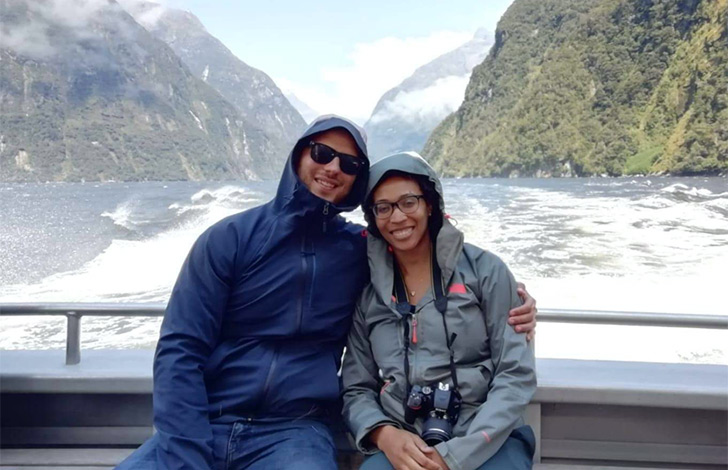Dayton Engineer

The Multi-Ethnic Engineers Program delivers a unique level of student support that consistently contributes to student success
By Karen Updyke, School of Engineering
University of Dayton Department of Chemical and Materials Engineering alumni, Colin Hisey ’10 and Lydia Everhart ’11, have enjoyed success from UD to New Zealand.
While at UD, they participated in the Multi-Ethnic Engineers Program and gained insight beyond academics. “We were not just a number at UD; faculty and staff went out of their way to offer support,” said Everhart.
For over 20 years, the UD School of Engineering Multi-Ethnic Engineers Program has delivered a unique level of student support. It is a community of faculty and staff scholars who support experiential exploration and collaboration – co-op, professional organizations, ETHOS and the Innovation Center just to name a few.
Hisey and Everhart agree, “MEP gave us the assistance and confidence needed to tackle the tough engineering coursework. We had access to peer, faculty, staff, and professional help through networking, discussions, and speakers.” They applaud MEP as well as faculty and staff: “Laura Bistrek, Maceo Cofield, Charles Browning, Tony Saliba, Julie Brill were positive influences and helped us succeed as students and design our careers. We had early exposure to hands-on research, which was a unique experience that encouraged us to continue our education after graduation.”
They met at the STEM summer bridge program through the Diversity in Engineering Center but began their love story years later in a biology class – sharing notes. They were chemical engineering majors and interested in biomedicine, which they both followed.
After graduation, Hisey received his master’s degree in chemical engineering in 2011 from UD and his Ph.D. in biomedical engineering in 2018 from The Ohio State University. He then traveled to New Zealand, where, as a postdoc research fellow, he studied the role of extracellular vesicles in metastasis and their potential in medical applications at the Hub for Extracellular Vesicle Investigations (HEVI) at the University of Auckland. “It was the perfect fit,” said Hisey. “Auckland was one of the top universities for my research interests.”
Everhart received her master’s degree in biomedical engineering from Case Western Reserve University in 2014. She then pursued clinical translational research briefly before transitioning to a role in operations management at McMaster-Carr Supply Company. In New Zealand, Everhart secured a position with Auckland UniServices Ltd, a consultancy for faculty proposals, patents and industry-sponsored research, and she also found her analytical niche.
After three years in New Zealand, they returned to the States and now reside in Columbus, Ohio, where Hisey is a LEGACY Postdoctoral Scholar with The Ohio State University and plans to remain in academia and continue his research. Everhart works with the Nationwide Children’s Hospital in Columbus supporting the development of innovative and optimized processes that will benefit the children, the parents and the hospital.
More than 10 years after their UD graduation, their love grows, their successes shine, and they continue to return to UD, contribute, and make a difference.
They agreed that “MEP and the University of Dayton supported us beyond our expectations."
MEP thrives today and is one of the multiple programs that receives direct funding for student scholarships from UD’s annual day of giving: One Day, One Dayton.


